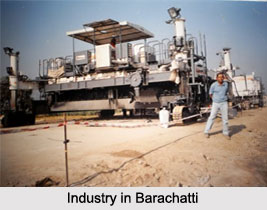 Barachatti is a block in the Gaya district of Bihar. This place is popular for natural beauty. But it has no tourist importance. Barachatti has high economic value through markets and the super markets.
Barachatti is a block in the Gaya district of Bihar. This place is popular for natural beauty. But it has no tourist importance. Barachatti has high economic value through markets and the super markets.
Location of Barachatti
Barachatti is located at an elevation of 159 m (522 ft) above sea level of Gaya District of Bihar. It is situated at 45 km towards South from District headquarters Gaya which is 150 km from Capital of Bihar, Patna towards North. It is bounded by Chouparan Block towards East, Itkhori Block towards South, Fatehpur Block towards North, Mohanpur Block towards North. Bodh Gaya City, Gaya City, Sherghati City, Jhumri Tilaiya City are the nearby cities to Barachatti.
Geography of Barachatti
Barachatti contains 141 villages and 13 gram panchayat. Sarwan bazar is biggest and Nimi is smallest village of Barachatti.
Population of Barachatti
The total population in Barachatti sub district is 142,534 as per the survey of census during 2011 by Indian Government. There are 72,455 males (51%); There are 70,079 females (49%).
Economy of Barachatti
Barachatti Bazar (Sanichhar Bazar) Sarwan Bazar (Mangal Bazar) is among the largest cattle markets in Gaya situated at Barachatti. Mangal Bazar runs every Tuesday. There are other markets in Barachatti named as Sobh Bazar, Bhadhya Bazar and Barachatti Market. These markets are the major economical pillar of Barachatti.
Visiting Information
The National Highway 2 Grand Trunk Road from Kolkata to Delhi passes through Barachatti. The nearest railway station is Gaya Junction 47 km from Barachatti, which has trains to major destinations in India. The nearest airport is Gaya International Airport 40 km from Barachatti.



















